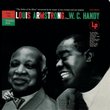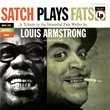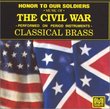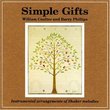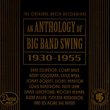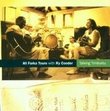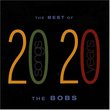| All Artists: Louis Armstrong Title: Louis Armstrong: The Complete RCA Victor Recordings Members Wishing: 5 Total Copies: 0 Label: RCA Release Date: 1/28/1997 Album Type: Box set Genres: Jazz, Pop, Broadway & Vocalists Styles: New Orleans Jazz, Swing Jazz, Traditional Jazz & Ragtime, Vocal Pop, Classic Vocalists, Traditional Vocal Pop Number of Discs: 4 SwapaCD Credits: 4 UPC: 090266868223 |
Search - Louis Armstrong :: Louis Armstrong: The Complete RCA Victor Recordings
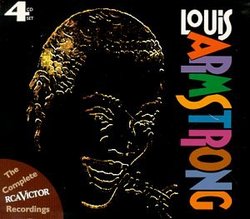 | Louis Armstrong Louis Armstrong: The Complete RCA Victor Recordings Genres: Jazz, Pop, Broadway & Vocalists
Louis Armstrong recorded for RCA Victor for two relatively brief periods in his long career, in the early days of his big band (1932 to '33) and in the period when he broke up the orchestra and returned to a New Orleans-st... more » |
Larger Image |
CD DetailsSynopsis
Amazon.com Louis Armstrong recorded for RCA Victor for two relatively brief periods in his long career, in the early days of his big band (1932 to '33) and in the period when he broke up the orchestra and returned to a New Orleans-style smaller ensemble (1946 to '47). This four-CD set is evenly divided between the two periods. The early big bands--first drummer Chick Webb's and then the trumpeter's own--provide a comfortable setting for Armstrong, who simply reigned supreme among jazz soloists of the period, with peerless invention and a stunning flexibility. He was defining the jazz singer's art as well, his subtle phrasing transforming even casual songs as convincingly as his flamboyant horn. Purists have often mourned Armstrong's shift to large groups, but these are fine bands, driven along by potent drummers like Webb and Big Sid Carlett and manned by distinguished players like saxophonists Louis Jordan and Budd Johnson and pianist Teddy Wilson. The later recordings find Armstrong leading superb groups, with old associates like trombonist Kid Ory, clarinetist Barney Bigard, and drummer Zutty Singleton and classic repertoire like Fats Waller's "Ain't Misbehavin'" and Hoagy Carmichael's "Rockin' Chair." The Town Hall recordings from 1947, with Armstrong trading vocals and solos with trombonist Jack Teagarden, are among Louis's greatest work. The set also includes meetings with other musical icons. Armstrong provides bluesy trumpet accompaniment to country singer Jimmie Rodgers on a rendition of "Blue Yodel No. 9" and meets Duke Ellington on record for the first time on "Long, Long Journey." --Stuart Broomer Similar CDsSimilarly Requested CDs
|
CD ReviewsBest Way to Own the RCAs Mike | 05/26/2009 (5 out of 5 stars) "Considering the many and myriad ways RCA (now BMG-Sony) has parsed and packaged this material in bits and pieces, it is a relief to be able to get it all in one set. You won't hear it in better sound than this, and the material is essential for a comprehensive Armstrong collection. The first two discs are from the early thirties (my favorites), and the last two are recordings from 1946-47. The generous liner notes are by Armstrong authority Dan Morgenstern. If there is a complaint, it would be the relatively minor one of the graphic artist having chosen the large but hard-to-read (Broadway?)typeface for the song titles. And nowhere is there a consolidated list of song titles on the back of the case or anywhere else. No matter. This is great stuff, and not to be missed. The current used prices being posted makes a purchase decision that much easier."
|

 Track Listings (18) - Disc #1
Track Listings (18) - Disc #1
